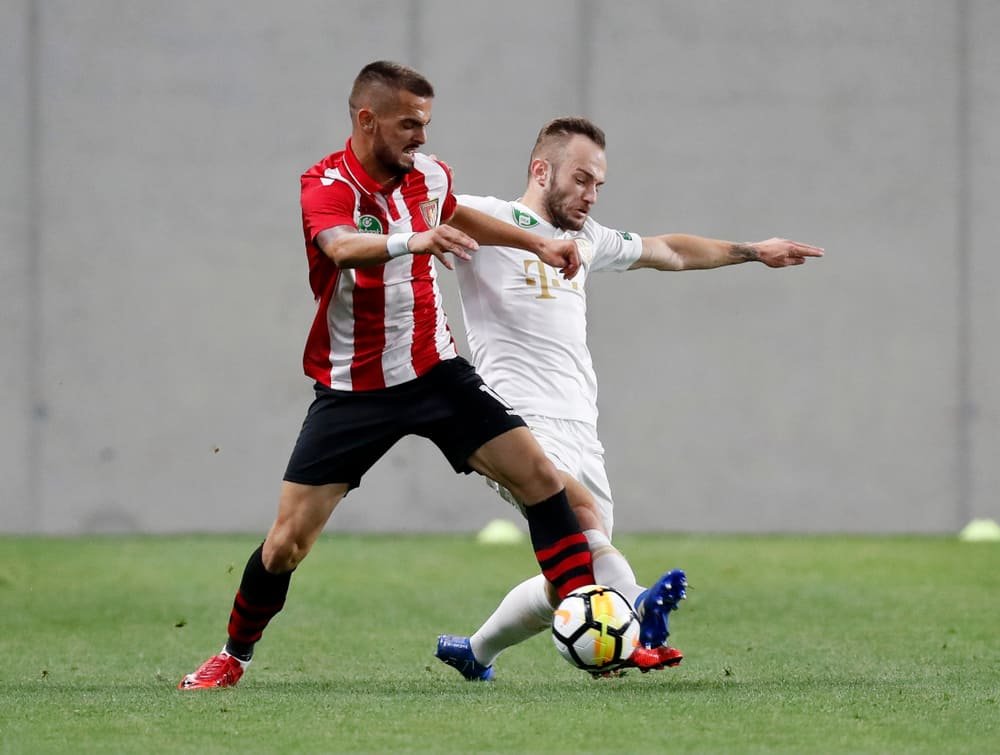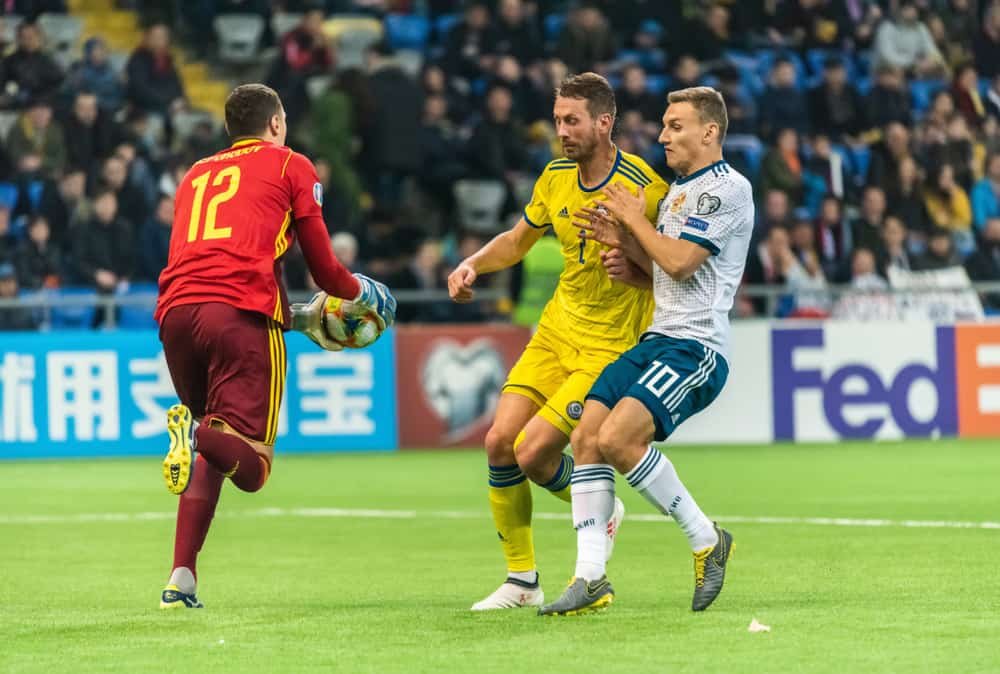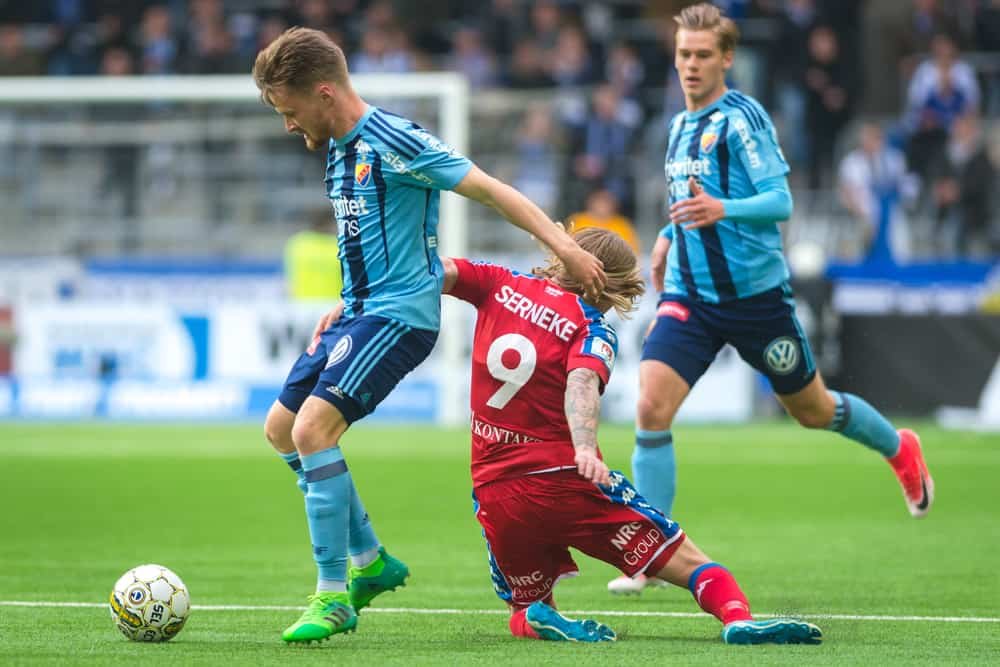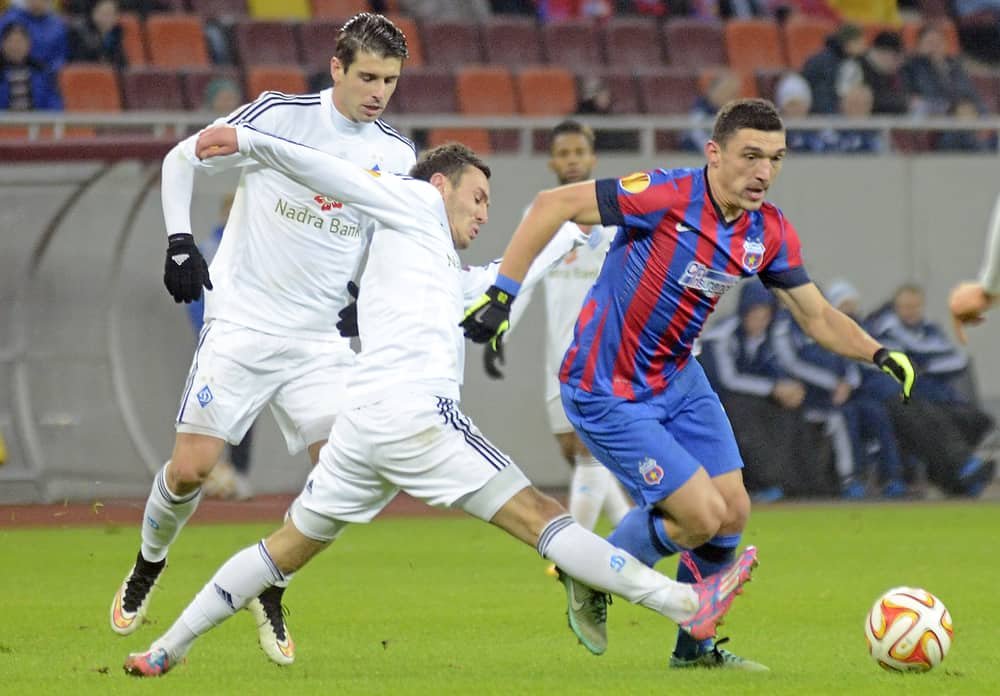
Many people mistakenly believe that soccer isn’t a contact sport.
It’s not hard to see why ‒ when you hear the term “contact sport”, you immediately think about sports like American football, or hockey ‒ where participants decked out in top-to-bottom protective gear try to hit each other as hard as they can.
Soccer doesn’t really fit into this perception of a contact sport, as the only pieces of protective gear most players wear are a pair of shin guards. Soccer players also aren’t trying to hit each other as hard as possible ‒ in fact, the rules expressly forbid it.
Despite the differences between “hard” sports like hockey and “light” sports like soccer, both are in fact considered contact sports. To learn why soccer is considered a contact sport, read on.
Why is Soccer a Contact Sport?
According to a study from the International Journal of Science and Research, a contact sport is “a sport that emphasizes or requires physical contact between players.” Based on this definition, soccer is a contact sport. Certain types of contact are necessary and expected when playing soccer.
Though it might not seem like it at first glance, soccer does, in fact, fit this definition. In the rest of this article, we’ll discuss what types of contact are and aren’t allowed in soccer, according to the IFAB (The International Football Association) as spe
Legal Types of Contact in Soccer
Contact between feet

Incidental contact between two players’ feet is expected and allowed. As soccer is a sport where the ball is almost entirely controlled by players’ feet, it would be ridiculous if the rules dictated that feet aren’t allowed to touch.
Contact between shoulders
Contact between the shoulders of two players is also expected and allowed. The most frequent example of this occurring is when two players are running side-by-side as they chase a ball moving in front of them. Shoulder contact can also occur when one player comes from the front or back and attempts to tackle the other player and steal the ball.
The IFAB rules call these types of shoulder-to-shoulder plays examples of a “fair challenge” or a “fair charge”.
When judging whether a charge is fair or not, the referee will typically look to see that is not using an excessive amount of force and that each player has at least one foot planted on the ground. The person challenging for possession of the ball isn’t allowed to recklessly barrel into an opponent at a high rate of speed, even if he does lead with his shoulder.
During a fair charge, one player is allowed to knock the other player to the ground. This is permitted when one of the challengers accidentally loses their balance, when the timing of a weaker hit simply caught the player off guard, or if the attacking player is significantly larger or more powerful than the defending player.
Contact between goalie and player
Goalies are given some special privileges on the soccer pitch. They can use their hands, they can stand in the same spot for most of the game, and they can aggressively challenge attacking players for the ball without fear of receiving a foul.

When a goalie challenges an attacking player, the attacking player is supposed to veer off and avoid hitting the goalie. This often doesn’t happen though, with many attackers waiting until the last moment to jump or dive out of the goalie’s way. Incidental contact can occur in these circumstances, but the refs will usually wave it off if no one gets injured.
Illegal Types of Contact in Soccer
Just because soccer is a contact sport doesn’t mean that all kinds of contact are allowed. The IFAB guidelines stipulate that illegal contact includes:
“… charges, jumps, kicks or attempts to kick, pushes, strikes or attempts to strike (including headbutt), tackles or challenges, and trips or attempts to trip.”
LAW 12 – IFAB
The guidelines also say that one team will be awarded a free-kick (or a penalty):
if a player commits one of these offenses in a manner considered by the referee to be careless, reckless, or using excessive force.
LAW 12 – IFAB
To zero in on what truly constitutes illegal contact, I’d like to talk about what the terms “careless”, “reckless”, and “excessive force” mean in this context.
The meaning of “careless”
The IFAB guidelines state that
“careless is when a player shows a lack of attention or consideration when making a challenge or acts without precaution.”
LAW 12 – IFAB

Basically, a “careless” player is someone who doesn’t think before they make contact. The illegal contact usually isn’t intentional, but it’s illegal nonetheless.
As you probably know by now, there are right ways to make contact in soccer and wrong ways to make contact in soccer. Making contact in the right way won’t get you a foul while making contact in the wrong way will get you a foul.
In order to make contact in the right way, you need to be thinking about how you’re making contact. If you don’t think about how you’re making contact, you run the risk of making contact in the wrong way and getting a foul called against you.
If the referee thinks you were making contact without thinking about it, they could consider that “careless” and call a foul on you.
Here are a few examples of careless contact:
- When a player makes a diving header in an attempt to score and accidentally hits an opponent in the process.
- When a player makes a sloppy slide tackle that ends up tripping their opponent.
- When a player is looking at a ball in the air and runs headfirst into an opponent, knocking them over in the process.
The meaning of “reckless”
The IFAB guidelines state that:
“reckless is when a player acts with disregard to the danger to, or consequences for, an opponent …”
LAW 12 – IFAB
Reckless contact is a bit different from careless content. While the word “careless” insinuates that the player making the contact doesn’t have ill intent, the word “reckless” insinuates that the player doesn’t really care whether the contact hurts their opponent or not.

Here’s an example that might highlight the difference.
Let’s say there are two players. One makes a careless slide tackle, and the other makes a reckless slide tackle.
The player who makes the careless slide tackle slides without really thinking about it. They’re not really paying attention, and their carelessness might accidentally cause injury. If an injury does occur though, the player genuinely didn’t mean for it to happen.
The player who makes the reckless slide tackle knows their contact might injure their opponent. They are knowingly making a dangerous tackle that might end up harming their opponent. They don’t care if their opponent gets hurt ‒ in fact, some players who make reckless tackles do so with the intent of injuring their opponent and removing them from the game. If an injury does occur, the player may very well be happy about it.
Here are a few examples of reckless contact:
- When a player slide tackles a goalie, contesting the ball, knowing full well their cleats might end up in the goalie’s face.
- When a player performs a high kick during a contested header, intentionally putting the opponent at risk of getting a fast-moving cleat to the face.
- When a player flies into a defensive wall and knocks everyone to the ground, knowing that such a play could cause injury to numerous opponents.
The meaning of “excessive force”
The IFAB guidelines state that:
“using excessive force is when a player exceeds the necessary use of force and endangers the safety of an opponent …”
LAW 12 – IFAB
This final guideline dictating what constitutes illegal contact rarely occurs, but it’s absolutely intentional when it does. A player who uses excessive force when making contact is knowingly trying to hurt their opponent.

Here are a few examples of excessive force:
- When a player hurtles in at breakneck speed to shoulder tackle an opponent.
- When a player jumps over an opponent during a contested headed with such force that the opponent falls to the ground.
- When a player fends off an attacker with such force that the attacker goes flying to the ground.
